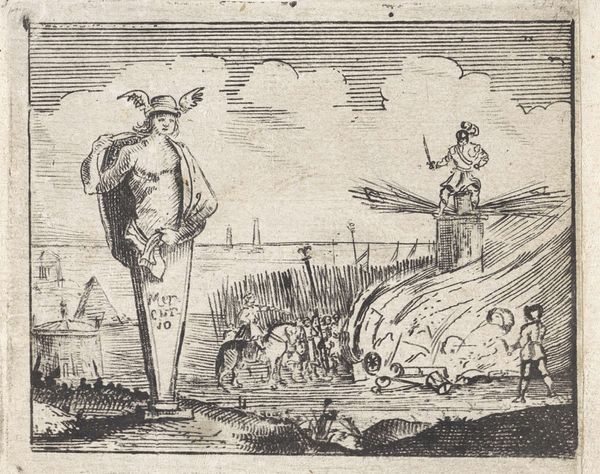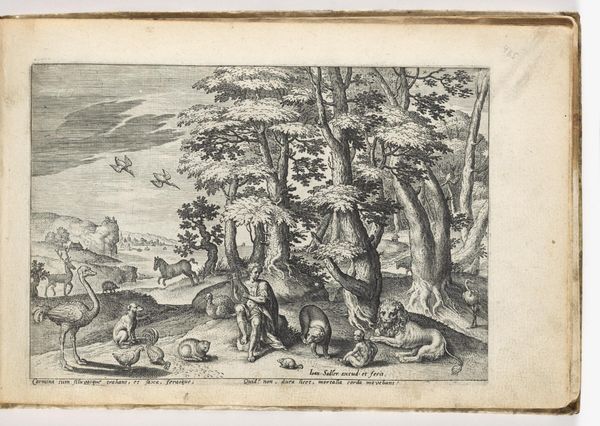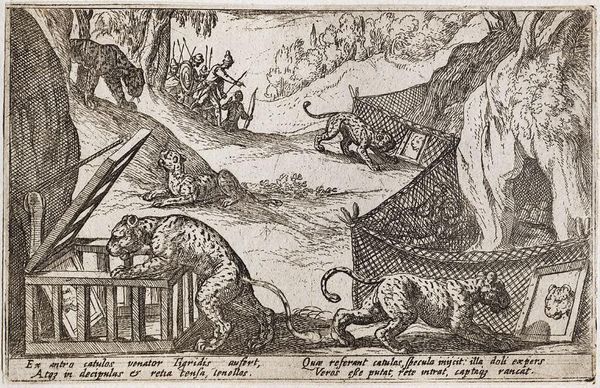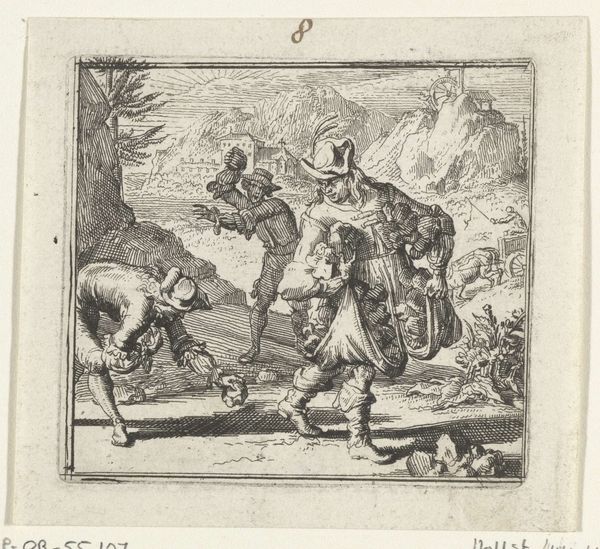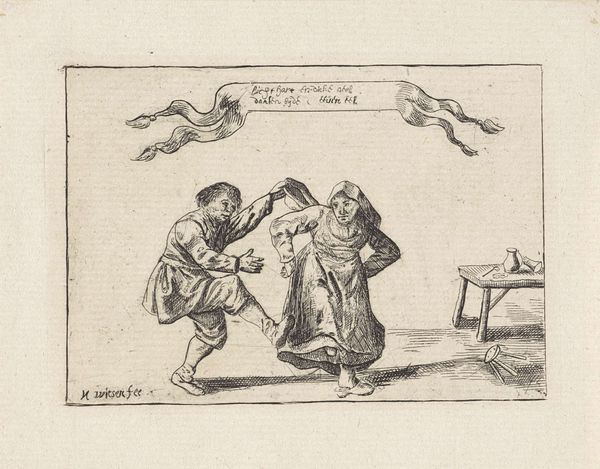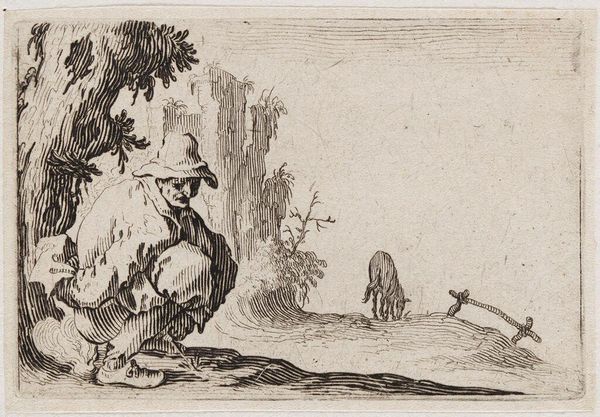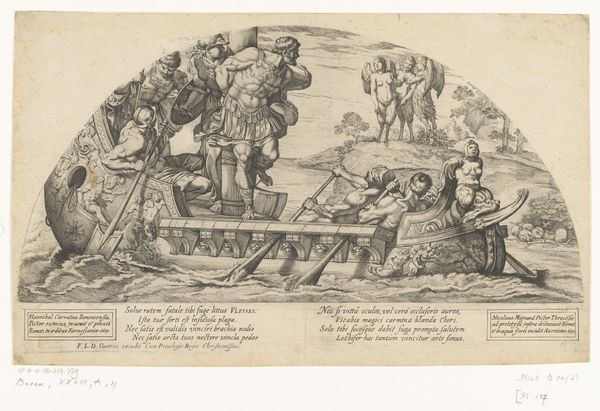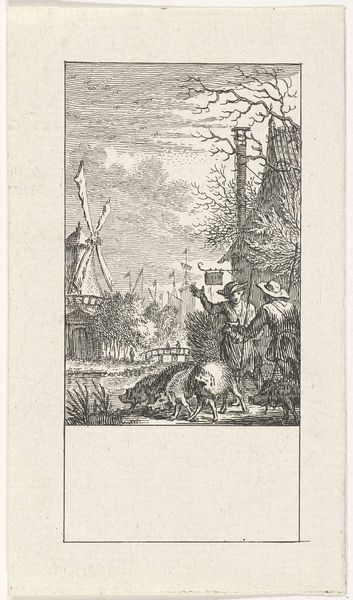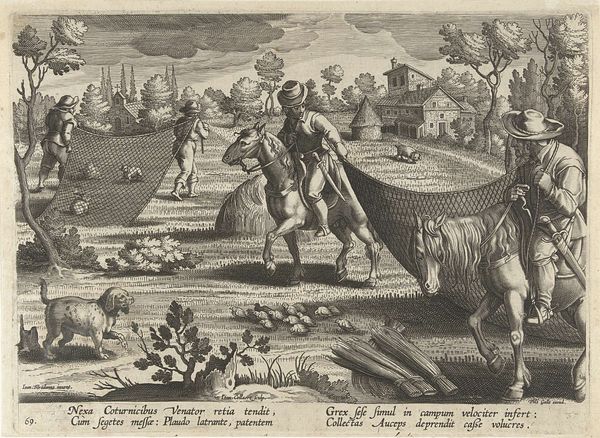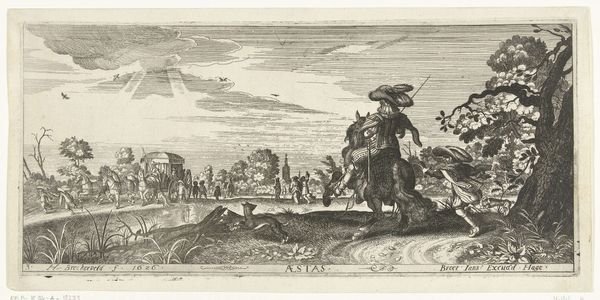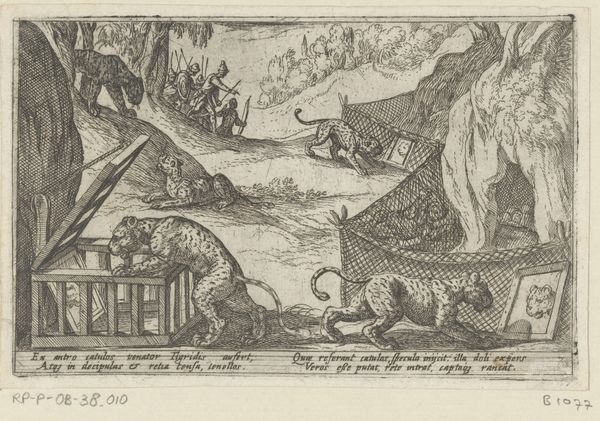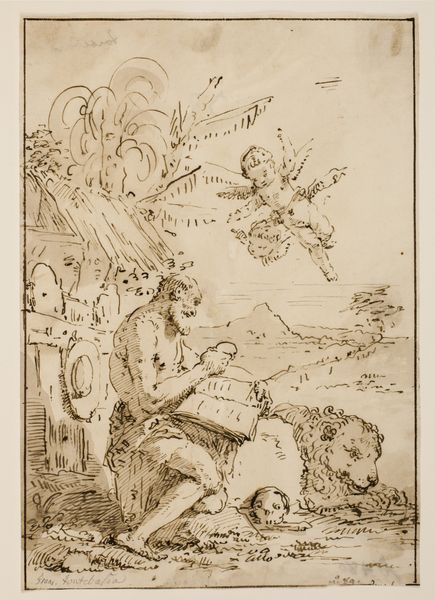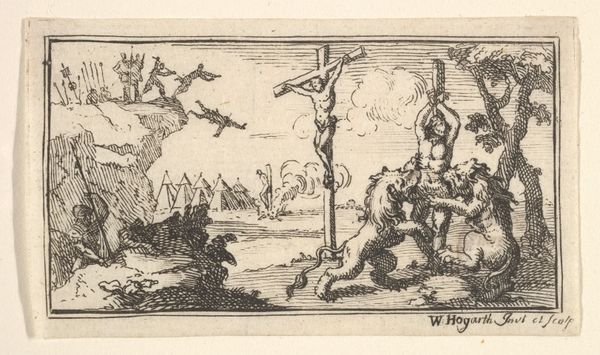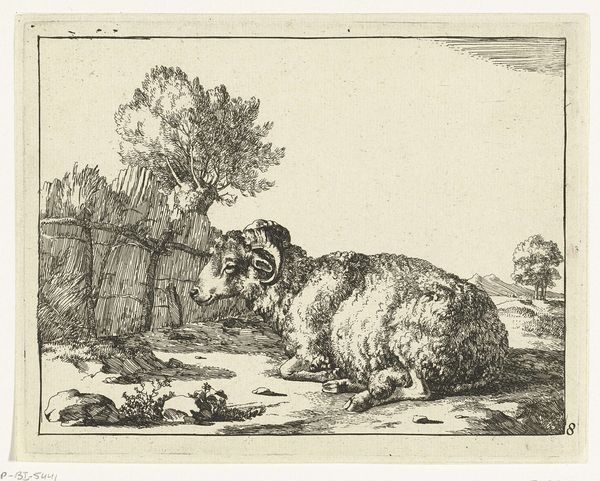
print, engraving
#
baroque
#
animal
#
dutch-golden-age
# print
#
landscape
#
figuration
#
engraving
Dimensions: height 114 mm, width 147 mm
Copyright: Rijks Museum: Open Domain
Curator: This print, residing here at the Rijksmuseum, is called "Beer bij stenen muur," or "Bear by a Stone Wall," by Marcus de Bye, and it likely dates sometime between 1664 and 1761. It's an engraving. What’s your first impression? Editor: Immediately, I’m struck by the bear's posture. It seems burdened, almost melancholic, leaning against the stone wall. There's a strange vulnerability that disrupts traditional representations of the animal. Curator: That’s perceptive. Contextually, prints like this circulated widely during the Dutch Golden Age, functioning as both decoration and a means of disseminating knowledge about the world. They reached diverse audiences, shaping perceptions of nature and animals. The bear itself became a symbol, sometimes of strength, other times of untamed wildness, depending on the social and political lenses applied. Editor: Exactly! This image plays with those concepts. While the landscape suggests a connection to the natural world, the stone wall introduces human intervention, framing the bear within a structured environment. The bear’s dejected pose further complicates things – it’s an animal in subjugation, caught between worlds, not embodying its expected ferocity, potentially commenting on humankind's relationship with the natural world and our efforts to control it. It touches on issues of dominance and power. Curator: It's also worthwhile to consider the societal fascination with the exotic during this period. Representations of animals, often based on hearsay and limited observation, fueled European imaginations and played into colonial narratives. How might this image, with its somewhat pathetic depiction of the bear, subtly reinforce the perceived superiority of European civilization over the untamed 'wilderness'? Editor: Good point. The bear could even become a metaphor for colonized peoples or the working class– exploited, confined, existing on the margins of an emerging mercantile society. Looking closer, even the wall is damaged; the inscription partially broken, almost obscuring the act of its production which creates questions of the permanence of knowledge and legacy. It asks, 'who gets to write history, and who or what gets left out?' Curator: The artist's choices – the bear's hunched shoulders, the imposing wall, even the details of the foliage, combine to evoke a feeling of… resignation? Editor: Precisely! A resignation that begs the viewer to question not just our relationship to nature, but our societal structures and narratives that support these imbalances of power. It really brings the image into our current day, making the piece feel unexpectedly radical. Curator: Yes, definitely offering much to reflect on, regarding history, visual artistry, and their social repercussions. Editor: It truly does.
Comments
No comments
Be the first to comment and join the conversation on the ultimate creative platform.
